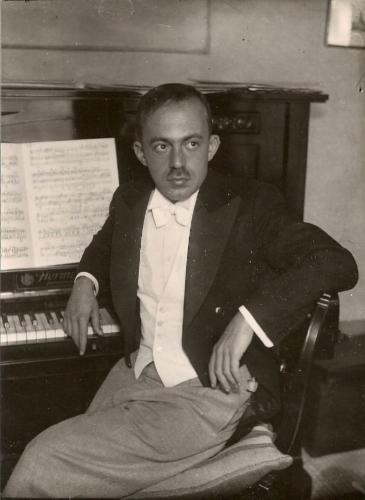Symfonietta voor strijkers op. 66
By Géza Frid
Details
Andante capriccioso
Allegro giusto
Commissioned by the Ministerie van O. K. en W
De huidige muziektaal en haar moedige poging tot een 'Umwertung aller Werte' verkeert momenteel nog in een experimenteel stadium. Desalniettemin kan ook de componist wiens ontwikkeling op traditionele basis steunt, zich hier niet geheel buitenhouden: de thans actuele tegenstellingen tussen atonaal en tonaal, tussen pure klankkleur en 'ouderwets' motivische werkwijze brengen nu eenmaal problemen van allerlei aard met zich mee.
Ook de Symfonietta, waarvoor welbewust de sobere bezetting van strijkorkest werd gekozen, getuigt van deze conflicten; niet slechts door de menigvuldige contrasten der beide delen, waarvan het eerst een ijle klank en labiele opzet, het motorisch tweede een hechte vorm vertoont, maar ook door de talrijke botsingen op melodisch, harmonisch, contrapuntisch en instrumentaal gebied. Dat hier tenslotte het constructieve element en de tonaliteit de overwinning behalen, wil echter nog geen vingerwijzing naar de toekomst zijn. - GEZA FRID

 Guillaume Landré, Robert de Roos, Jan Felderhof, Géza Frid
Guillaume Landré, Robert de Roos, Jan Felderhof, Géza Frid
